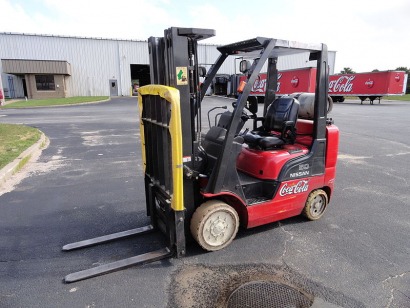
February 2011 again saw many of our articles breaking the 3,000 mark for viewings, with a piece on Coca-Cola turning to hydrogen power for its forklift fleet coming top with 4,667 hits. The article covered the news that Air Liquide would be supplying hydrogen to power a fleet of 37 forklift vehicles at Coca-Cola’s bottling and distribution centre in San Leandro (California, US). “The Coca-Cola installation is the latest to validate hydrogen as a practical and commercially viable fuel source and Air Liquide’s leading role in this growing global market," commented Michael J. Graff, President and CEO of American Air Liquide Holdings, Inc at the time The company revealed that in 2010 it provided more than 40,000 hydrogen fills worldwide.
In stark contrast to this positive news, our next most popular piece (4,403 hits) in February 2011 came from Spain, where our bioenergy expert, Javier Rico, reported that the country’s biodiesel industry was up against the ropes since 60% of biodiesel in Spain was imported, primarily from Argentina and Indonesia. The largest biodiesel producer in Spain and the third largest in Europe, Infinita Renovables, was set to close its two plants and had announced the layoff of 100 workers. The second biggest Spanish producer, Entaban, had three of its four plants lying idle, considerably affecting its workforce. In the light of this dramatic situation, the sector had brought attention to the high level of biodiesel imports and the Government’s passiveness, which responded by saying it will study the problem to find a solution.
The problems continued for the Spanish biodiesel sector, with the Spanish Association of Renewable Energy Producrers (APPA) calling on the Government to take urgent steps to “avoid the death of the sector". That said, thankfully, a brief look at the two companies’ websites shows that all their plants are still operational, while criticisms against the sustainability of biofuels waned during 2011, while support from the aviation industry imporved the outlook for the sector as a whole.
Good news for Latin American wind
Next in our top ten was another optimistic piece of news (3,623) on Honduras's first wind farm. Honduras is reported to be the only country in Central America that supplies all its own electricity needs, and with work starting in February 2011 on the new Cerro de Hula wind farm in the municipality of Santa Ana, the country stepped up its efforts to boost the amount of electricity produced using renewable sources from the current figure of around 63%.
Financed through the Export-Import Bank of the United States and the Central American Bank for Economic Integration, Cerro de Hula is the largest wind farm in the Central American region, and by October, the project team had successfully commissioned and connected to the grid all 51 turbines. The team continued to test and adjust the system before commercial operation officially began last month.
Thankfully, the rest of February 2011’2 top ten was mainly positive, with only one other bad piece of news for the renewables sector (3,455), about Germany’s decision to slash solar subsidies by 15 percent.
Otherwise, we saw a head-to-head between Pedro Marín and Adnan Amin to run the International Renewable Energy Agency (IRENA). The contest was won by Amin, who has spent the last year making great progress in driving the Agency’s remit forward and boosting awareness of its work, as we reported in this piece last month.
Bioenergy features strongly in our top ten, with three pieces covering how the biogas sector has become a “blue-chip value” in Europe, the release of a deluge of bioenergy barometers by EurObserv’ER, which focused on the latest developments in renewable municipal solid waste, biogas and solid biomass in the European Union. The first of the triple release, the Renewable Municipal Waste Barometer, found that renewable waste incineration was the main energy conversion route for the biodegradable fraction of waste.
In the second report, the Biogas Barometer, EurObserv’ER revealed that “the biogas sector is gradually deserting its core activities of waste clean-up and treatment and getting more and more involved in energy production, in some countries also using energy crops for biogas production”.
While in the last of the three reports, the Solid Biomass Barometer showed that solid biomass had left the other renewable energy sources standing in terms of use and potential. Primary energy output from solid biomass combustion rose in 2009 yet again to a new height of 72.8 Mtoe, which equates to a 3.6% increase on 2008.
Our last three most popular pieces this time last year highlighted how renewables had generated 10,000 jobs in Netherlands, how the Dutch firm Tocardo had successfully commissions its first bi-directional tidal energy turbine, and how the US could follow Germany’s lead and grow its biogas sector.
This latter piece comprised an enlightening interview with 2G-Cenergy’s President and CEO, Michael J. Turwitt, who was confident that a combination of “US creativity and German ingenuity” would see biogas production ramp up. Turwitt said at the time that “Germany has all the potential to provide 50% of its electricity using biogas in the future, and 25% by 2020”."The goal is to get more power out of the same size motor," Dionysios Aliprantis recently told the university’s media specialist. "Or, that could mean getting the same power with a smaller motor."

